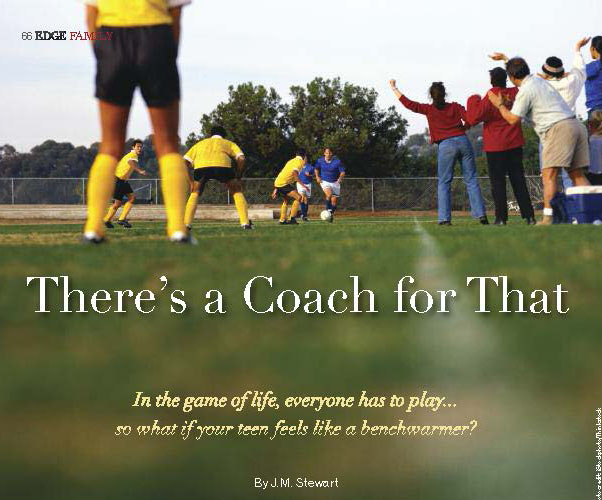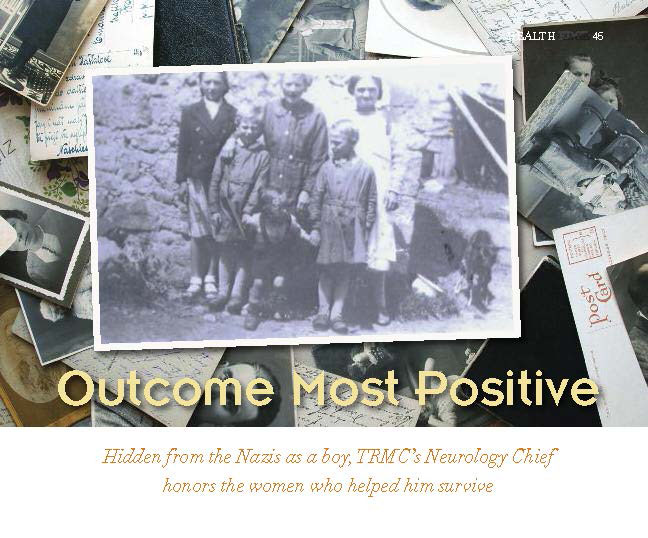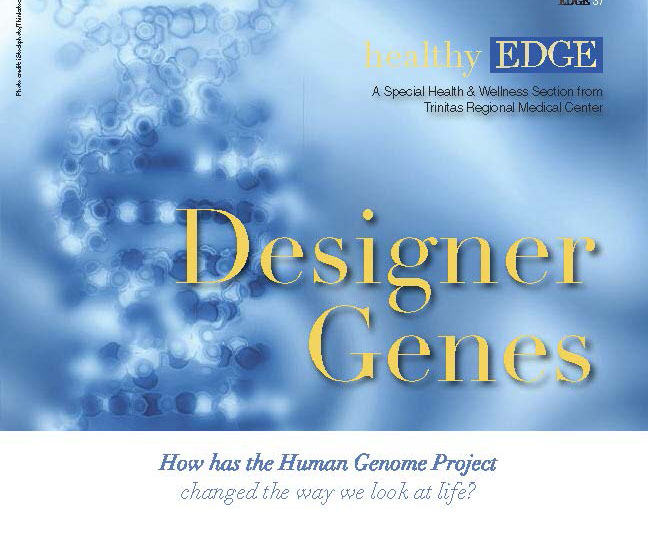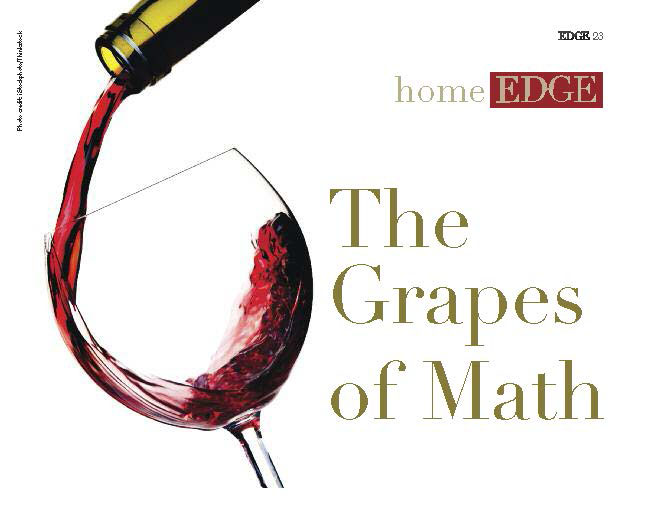 WIN, PLACE OR SHOW
WIN, PLACE OR SHOW
The Trinitas Health Foundation hosted its Night at the Races at the Meadowlands in East Rutherford. More than 175 guests enjoyed an evening of dining at Pegasus Restaurant and the thrill of harness racing while raising $38,000 for the Foundation.
STRENGTHENING THE ENVIRONMENT OF CARE
Phillips 66 Bayway Refinery, located in Linden, proudly continues its philanthropic activities which generously assist Trinitas. By partnering with Trinitas, Phillips 66 has helped the medical center address pressing equipment needs throughout the facility. Grant writers in the Trinitas Health Foundation have successfully presented grant proposals to the company, and it has responded generously to those requests for funding to enhance the medical center’s capabilities to continue to respond to the health care needs of the community.
With its proximity to the Trinitas Regional Medical Center it seemed like a natural fit for Phillips 66. In the past several years, Phillips 66 has provided funding toward the creation of an electronic medical records system. The new data system not only eliminates costly and redundant paper, but more  importantly provides a consistent means of sharing recorded documentation among health care professionals who are involved in patient care and treatment.
importantly provides a consistent means of sharing recorded documentation among health care professionals who are involved in patient care and treatment.
The latest grant that Phillips 66 made to Trinitas will be directed towards the purchase of state-of-the-art cardiac monitors that will be used throughout the medical center. Such monitors are specialized for the departments in which they are used and are critical to the appropriate care and treatment that patients receive.

Nadine Brechner and Gary S. Horan of Trinitas showed their appre-ciation to Phillips 66 Bayway Refinery’s Carol Ziegler, Public Affairs Manager (2nd from right) and Mary Phillips, Community Relations Coordinator, (far right) for the company’s most recent grant.
In the game of life, everyone has to play…so what if your teen feels like a benchwarmer?
By J.M. Stewart
The term Life Coach means different things to different people. You can hire one to help you with anything from cleaning out your closet to overcoming an addiction. For some people, a life coach is like an iPad—they didn’t know they needed one until they had one.
For teenagers struggling to find their way, however, a good life coach can mean the world.
Life coaches help navigate difficult changes and transitions. For young people, that can include moving from an old neighborhood to a new one, from a divorce to a remarriage, from high school to college—or out of a feeling of isolation. A life coach functions as a personal cheering squad and support group rolled into one, offering guidance toward a more balanced and happy life.
A generation ago, the idea of hiring a life coach sounded self-indulgent and a waste of money—something a bored, aimless yuppie would do. Life coaches made convenient fodder for sitcom writers. Today, there’s nothing to laugh about. Not only have life coaches gained in popularity and acceptance, there are numerous certification and training courses available (think amped-up Psych 101 courses) lasting from a few weeks to six months.
That being said, some of the most experienced, competent and successful life coaches are not certified. Their view is that most courses don’t offer the tools that a background in psychology—combined with years of working as a coach—has taught them. But, for the newbies, having a certification doesn’t hurt.
Why then, one might reasonably ask, wouldn’t you just go to a psychologist or other licensed professional instead of hiring a life coach?
“Sometimes,” explains Dove Rose, a highly regarded life coach based in California, “a regular psychologist, psychiatrist is problem-solving with medication or analyzing the past…you’re just in the hamster wheel, regurgitating the same story over and over, instead of trying to live a different story now.”
Indeed, the client–coach relationship is more casual than the psychotherapist–patient relationship. Psychologists rely mostly on scheduled office visits, whereas a life coach is accessible day or night by phone, through emails and texts, or on Skype. A life coach will also come to your home; psychologists don’t. Naturally, a good life coach is always aware that there is a very fine line between knowing when a client just needs someone to talk to, and when there are danger signs of a more serious rooted problem. That is when a life coach recommends the client seek help from a licensed professional.
What types of issues prompt a call to a life coach? Just about any complex lifestyle issue is fair game. In the case of teenagers, the trigger might be remoteness and slipping grades. As a parent, everything you read and hear screams Oh, no—my kid’s on drugs! A life coach who comes in and builds trust with that teen is likely to discover an alternative scenario. For instance, the parents might be raging alcoholics and the teenager doesn’t have the tools to cope with it. Sometimes, the kid just needs a friend who will listen.
 Rick Singer began his career as a coach and director of college-level athletics. For more than 25 years he has made a living as a life coach. He’s done life coaching in the corporate environment, as well on the student level. He has helped countless high-school student-athletes follow their dreams and play college sports, and worked with sports celebrities in planning their goals once their playing careers were over. Singer has been most successful working with teens and young adults in finding a college that is an appropriate fit. He cannot emphasize enough the importance of that “fit”—which is why he named his company The Key.
Rick Singer began his career as a coach and director of college-level athletics. For more than 25 years he has made a living as a life coach. He’s done life coaching in the corporate environment, as well on the student level. He has helped countless high-school student-athletes follow their dreams and play college sports, and worked with sports celebrities in planning their goals once their playing careers were over. Singer has been most successful working with teens and young adults in finding a college that is an appropriate fit. He cannot emphasize enough the importance of that “fit”—which is why he named his company The Key.
Teenagers, Singer freely admits, can be notoriously exasperating. It will come as no surprise to parents that he has worked with a number of kids who’ve simply had no interest in growing or taking chances where college is concerned. A lot of the time, Singer points out, it’s the result of overzealous parents who are relentless in the desire for their child to get into a big-name four-year college. In these cases, he sometimes finds the parents are unyieldingly negative to the child and negative to the life coach. In extreme circumstances, if the parents are totally out of control, Rick will actually “fire” them; in any given year he will do so with two to four families. It’s unfortunate because, in his experience, the kid will eventually come around.
Many parents of middle-school children hire life coaches. Their goal is to help their young teen deal with issues ranging from time management and personal grooming to weight loss and inferiority complexes. If your 8th grader hands in her homework on time but it’s a crumpled mess, and the teacher deducts points, a life coach might recommend using a folder. You’ve been telling your daughter that for a month—but does she listen? No, of course not. You are a meddling, know-nothing parent. When that same nugget of wisdom comes from a trusted, outside voice, that is the voice your 8th grader will choose to hear.
Before you jump into hiring a life coach—for your child or yourself—it’s important to understand that this can be an ongoing relationship. It can start out as once-a-week meetings or phone calls, evolve into every-day communication during panic situations, and then wane to once every two weeks, once a month, or just once in awhile. The cost of all of this support varies. Some coaches charge $60 an hour, some $200 per hour, some$5,000 for a whole year of coaching. So, it’s important to understand the coach’s billing system. Make sure to ask if they charge extra for phone calls, texts and emails.
Life coaches aren’t for everybody, but they do offer people a sense of calm and community, knowing that there is always someone they can talk to. People today often feel isolated as a result of problems at work, at school or at home. And although we are more connected than ever thanks to our myriad devices and social media outlets, it doesn’t mean we feel less isolated, sitting in a room by ourselves. For all of these technological advances, we seem to be losing the human exchanges that keep us whole.
“It takes a village,” Dove Rose likes to remind clients, “to stay sane in this world.”
And yes, you can say that a life coach is really just a paid friend. But you get what you pay for: everything that a really good friend should be.
Life Coaches & College:
5 Minutes with Rick Singer
Q: When is the best time for a life coach to enter into a teenager’s life?
A: A third of our families are in 9th grade, a third are in 10th grade, and the last third are the “panic” families.
Q: What is the difference between what you do as a life coach and a college advisor?
A: A lot of people who do what I do are just college advisors. They don’t engage in the kids’ lives, helping them figure out what they want to be and how to do it in terms of schooling. Life coaches are the people who engage in our clients’ lives and do different things to help them grow, in addition to getting into college. Because I’m in the home, I see everything else that goes on in the house. Whereas most advisors just focus in on the technical aspects of helping a kid get into college—like helping with the application—I do both. I want to help them get into college and I want to help them grow as people. The key is coaching them in everything about their life. There aren’t a lot of people who do it like we do it.
Q: What are some issues that you help with outside of the college process?
A: It can be a lack of motivation, especially with boys. There are kids who have learning “differences” and the parents feel that nobody cares about them; meanwhile they’re smart kids! The high-school advisor has no clue or doesn’t want to take the time to help. I also help to find the right school for the student, now that there are so many schools that the kids are looking at and comparing.
Q: How do parents of girls differ from parents of boys in terms of their goals for college?
A: The typical parents will send their daughter to a private school more so than they would a boy, because the parents of a girl want their kid at a “safe” school, a small, safe college. Boys? The mindset is just throw ’em into any public college—they’ll survive. That is not always the case, however. Sometimes a junior college, or even a trade school, is a more appropriate choice.






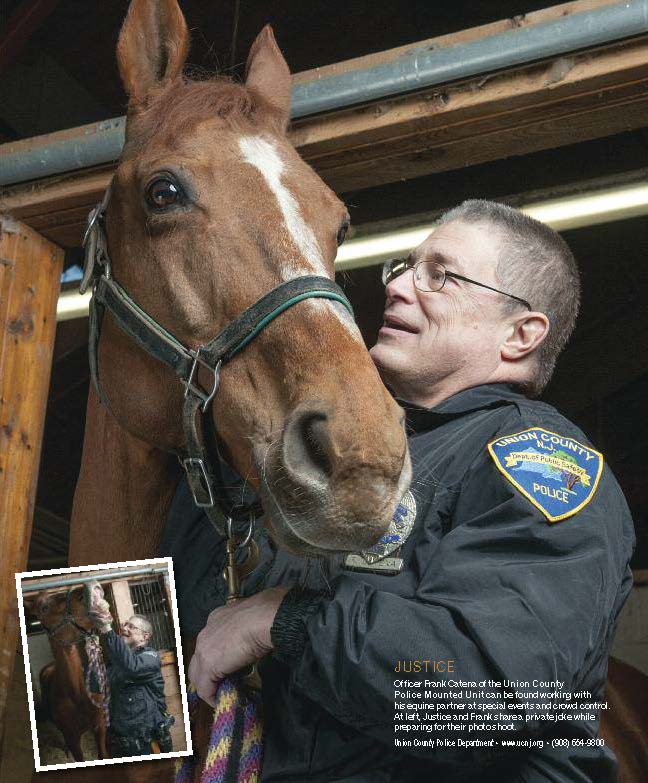
News, views and insights on maintaining a healthy edge.
 California Cool
California Cool
Revenge is a dish best served cold. But if scientists at the University of Southern California are right, soon the target of that revenge might not feel it. That’s because neurobiology professor David McKemy and his team have isolated the sensory network of neurons in the skin that relays the sensation of cold to the brain. The USC researchers reported in the February Journal of Neuroscience that they have managed to control TRPM8 (pronounced tripemate)—the sensor of cold temperatures, and also menthol—to “turn off” cold receptors in the skin, without turning off the heat receptors. Their discovery has promising implications in the treatment of pain. “One of our goals,” says Dr. McKemy, “is to pave the way for medications that address the pain directly, in a way that does not leave patients completely numb.”
 Drop-Dead Good, Y’all
Drop-Dead Good, Y’all
Earlier this year, at the American Stroke Association’s international conference, research was presented confirming what everyone knows but we’re all too willing to ignore: A diet of Southern-style foods is directly linked to a higher risk of stroke. That diet—characterized by researchers as including fried chicken, fried fish, fried potatoes, bacon, ham, liver, gizzards and sugary drinks—explains why, statistically speaking, Southerners are 20 percent more likely to suffer a stroke than the rest of Americans. “We’ve got three major factors working together in the Southern-style diet to raise risks of cardiovascular disease,” explains lead researcher Dr. Suzanne Judd, a nutritional epidemiologist at the University of Alabama-Birmingham. “Fatty foods are high in cholesterol, sugary drinks are linked to diabetes and salty foods lead to high blood pressure.” This was the first large-scale study on the relationship between down-home cooking and stroke events.
 Link Between Folic Acid and Autism
Link Between Folic Acid and Autism
Obstetricians have been recommending folic acid for their patients for decades. Results of a Norwegian study published in the Journal of The American Medical Association provides expecting moms with one more good reason to listen to their baby doctors. Women who took folic acid supplements from four weeks before conception to eight weeks after had a 40 percent lower chance of having an autistic child. Researchers looked for correlations between other supplements and diets—and also explored the affect of folic acid on Asberger Syndrome—but did not find anything of statistical significance. Interestingly, pregnant women who took folic acid beyond the eighth week of pregnancy showed no marked improvement over those who took it for only the first eight weeks. “This vitamin is also known to decrease the risk of neural tube defects to the developing baby,” adds Dr. Orli Langermost, Director of Obstetrics and Perinatal Services at Trinitas. “The Norwegian study reports a lower risk of autism amongst mothers who took folic acid supplements before and during early pregnancy. Although more research is needed to investigate whether this association is causal, it is another great reason for obstetricians to promote prenatal folic acid supplementation to their pregnant patients.” The article was careful to point out that this study does not prove that folic acid supplements can prevent childhood autism. However, the findings are so apparent that they constitute a good argument for further exploration.
 The Slim Jim Diet
The Slim Jim Diet
No, you can’t lose weight eating Slim Jims. But the nitrite-packed meatsticks (that is meat, right?) aren’t as bad for you as you think. You might be surprised to know that fruits, vegetables and your own saliva also contain nitrites. So what gives? The idea that nitrites cause cancer stems from two reports (one in Nature and another in Science) issued in the 1970s, which created a media sensation and triggered a cascade of food-additive legislation. In 2012, Dr. Andrew Milkowski of the Food Research Institute at the University of Wisconsin-Madison, authored a study that attempted to put the threat of nitrites into better context. The Science article, he says, “was later found to be flawed—but that was not nearly as well-publicized.” Dr. Milkowski also points out that the human body makes 70 to 100 milligrams of nitrite per day. By contrast, a cooked hotdog, a side order of bacon or a Slim Jim has only a few milligrams of nitrite left in it (if that). In other words, you’d have to eat 30 or 40 Slim Jims to take in the same amount of nitrites you get swallowing your own spit every day. Bon appétit!
 Oils Well that Ends Well?
Oils Well that Ends Well?
Not all polyunsaturated vegetable oils are created equal. According to the results of the Sydney Diet Heart Study, which monitored 458 Australian men—aged 30 to 59—with a history of cardiovascular problems, oils containing Omega-6 fatty acid did not live up to their long-touted health benefits. On the contrary, the study found that participants who consumed vegetable oils rich in Omega-6 (in the form of safflower oil and safflower oil polyunsaturated margarine), actually had an elevated risk of death from all causes—including death due to coronary heart disease and cardiovascular disease. Some scientists are now saying that the American Heart Association’s recommendation that people get more Omega-6 fatty acid may need to be revisited. “People just ran with s the ball that polyunsaturates are good for you, so therefore each individual one must be good for you,” says Richard Bazinet, a nutrition professor at the University of Toronto. “That turns out not to be true.” Omega-6 oils include safflower and corn oil. Omega-3 oils, which lived up to their billing as “heart-healthy” in the Australian study, include canola oil, and oil from flaxseed, walnuts and fish such as salmon and trout. Soybean oil contains both Omega-3 and Omega-6. Michelle Ali, RD, Director of Food & Nutrition Services at Trinitas, points out that while this study finds that polyunsaturated fatty acid (PUFA) or specifically, safflower oil, was not as beneficial—and may be detrimental to those with heart disease—she doesn’t believe that the message presented by the American Heart Association (AHA) is completely wrong. “Since October 2000, the AHA has placed more emphasis on foods rather than on percentage of food components, such as fat, cholesterol, etc.,” she explains. “However, as the science evolves we will find that changes will have to be made and the public educated.”
Hidden from the Nazis as a boy, TRMC’s Neurology Chief honors the women who helped him survive
By Erik Slagle
When a neurology patient recovers from injury or trauma, there’s a bit of mystery to how the brain responds—even a bit of a miracle. Dr. Bernard Schanzer has been working those miracles for more than 40 years, first as a neurology resident at St. Elizabeth’s Hospital, and later as chair of the Trinitas Neurology Department, the position he holds today. His personal story, though, might be the most miraculous one of all.
Bernard and his twin brother, Henry, grew up in Belgium during the 1930s, unaware of the horrors that awaited Jewish families. In the spring of 1940, as the German Army rolled through their country, they fled with their parents and sister, Anna, to neighboring France. The children eventually found sanctuary with the Bonhomme family on a farm in Saint-Etienne, near Lyon.
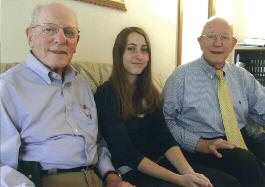
Dr. Bernard Schanzer (l) of Trinitas and his brother Henry pose for a family picture with Camille Panchaut, great-great-granddaughter and great-grandniece of the women who sheltered the Schanzer brothers from Nazis in France during World War II.
Dr. Schanzer recounts his story without a drop of melodrama. However, one can hear the exuberance pouring out in every word when he talks about the Bonhomme women. “Adolphine Dorel and her daughter, Jeanne Bonhomme, were unbelievable individuals,” he says. “For someone in France, at that time, to have this grandeur of spirit was incredible. And in many ways, Adolphine Dorel was my grandmother. My Meme.”
Hidden from the occupying Nazis, the boys fashioned yarmulkes out of cloth and recited the only Jewish prayer they knew. One night, Adolphine overheard them and asked what the prayer meant. She asked to learn it, and prayed with them to help them feel safe. The Bonhomme family was sheltering the Schanzer children—the boys with Adolphine, Anna with Jeanne—at great risk to themselves, and yet they never felt unwelcome.
“If they had been caught, they could have been deported for what they were doing, yet we never felt anything but safe and secure when we were with them,” recalls Dr. Schanzer. He talks about them through a contagious smile—testament to the light, the courage and the love that surrounded him and his siblings during that horrific epoch.
Bernard and Henry survived the war, made their way to the United States, started families of their own and became the proud grandfathers of 39 grandchildren between them. Last year, members of the Schanzer clan had the opportunity to meet Camille Ponchaut, the teenage great-great-granddaughter of Adolphine Dorel (and great-grandniece of Jeanne Bonhomme), when she came to America for a three-month study abroad program. During her stay, a delegation led by Senator Raymond Lesniak held a ceremony at the Statehouse in Trenton honoring Adolphine and Jeanne in a Resolution for their bravery.
“I knew about the role my family had played in their lives,” says Camille, “but I had never heard a detailed story before I met them. I was indeed very proud to discover more about my ancestors—how they were able to hide children during the Holocaust.”
For Senator Lesniak, the presentation of the resolution to the Schanzers and to Camille was part of a very personal storyline: Dr. Schanzer had treated the Senator following his stroke last summer. “Dr. Schanzer’s approach is very understated, and as a patient, that really builds your confidence,” Lesniak says; then he laughs. “This is how understated he is—it was during a follow-up exam that Dr. Schanzer asked me if I would do him a favor and arrange a tour of the statehouse for Camille. I said, ‘You want me to do you a favor?’ I was absolutely honored. He is a giant in the field of neurology in New Jersey.”
Dr. Schanzer says his greatest professional joys are still teaching and working with his residents. He’s seen the medical center—and the city of Elizabeth—undergo far-reaching changes since he joined the staff in 1970. “I was in residency at Albert Einstein College of Medicine,” he recalls. “A friend there referred me to what was then Elizabeth General Hospital. At that time, there were no fully trained neurologists in the area.”
These days, he oversees a department full of them.
In a profession where positive outcomes are everything, one wonders how the course of countless lives and careers might have been altered had Dr. Schanzer’s path not crossed that of Camille Ponchaut’s ancestors. “When all the lights were out in Europe,” he says, “Jeanne and Adolphine were stars. They are true examples of how we should behave and respect other people. How many people today can say they would have the courage to do what they did?”
How has the Human Genome Project changed the way we look at life?
By Christine Gibbs
The human body consists of more than 100 million million cells. Each contains a complete set of blueprints that determines who and what we are. Reading those blueprints was the goal of the Human Genome Project. By analyzing the sequence of the cellular gene pairs that make up that incredible macromolecule—our DNA—scientists hoped to unlock secrets that would lead to the prediction and prevention of future health issues, as well as designing treatments for all manner of diseases. The first significant results of the Human Genome Project were released to the public in 2003. Since then, an international army of biotech researchers has been using this information to explore the genetic differences that increase the risk for certain common diseases, such as diabetes and cancer, in order to develop effective cures and treatments.
When the Human Genome Project began, it laid out a set of ground rules for its participants:
- Identify all the genes in human DNA
- Sequence the chemical base pairs that make up human DNA
- Store this information in databases
- Improve the tools used to analyze this data
- Address the ethical, legal and social issues that are likely to arise and
- Transfer technologies to the private sector
Wait. What? That last item caught a lot of people off guard. Why would government-funded research centers in the US, UK, Japan, France, Germany and Spain simply hand over their breakthroughs to pharmaceutical companies and biotech firms? The directive to share technology with the private sector was originally intended to encourage friendly cooperation for the good of humankind. Needless to say, it actually generated some not-so-friendly competition—and, at times, near open warfare. Ironically, it was this rivalry that spurred some of the most productive research, and resulted in impressive scientific advances.
THE GREAT RACE
A case in point is J. Craig Venter, recognized as one of the most successful entrepreneurs in the genomics arena (he was included in 2008 on Time magazine’s list of the 100 most influential people in the world). Venter launched his career in bioscience with the Human Genome Project as a colleague of Dr. Francis Collins, who headed the National Human Genome Research Institute, which was formed under the National Institutes of Health. In his autobiography, A Life Decoded, Venter said he became frustrated with the slow pace of progress with the project, prompting him to fund his own company. To do so, he turned to Wallace Steinberg, a lifelong New Jersey resident and entrepreneurial visionary in the private sector. Steinberg was famously quoted in a 1992 New York Times article as saying, “I have this theory that death is a genetic disease.”

Photo credit: iStockphoto/Thinkstock
Together, Venter and Steinberg formed a non-profit research center, The Institute for Genomic Research (affectionately called TIGRE). The collaboration was nothing short of remarkable.
Venter’s corporate goal was to sequence the human genome and release it into the public domain faster and cheaper than the Human Genome Project itself. The pressure TIGRE put on the public program led to a redoubling of its efforts. In 2001, the Human Genome Project managed to publish its initial findings for the scientific community one day before Venter’s publication—three years before the project’s original target date. Yet the greater victory may belong to Venter. His “shotgun” approach to sequencing has become the de facto standard still used today. In truth, we are all the winners in this great race. Since then, the scientific advances from both the project and the private sector in deciphering the human genetic code have led to a wide range of improvements.
Topping the list of advances that have come from genetic research are those made in personalizing medical diagnosis, prognosis and treatment. Human genome mapping will soon become more available and popular as the cost (currently about $8,000) is reduced to a more affordable $1,000. That’s less than an MRI, which is mind-boggling when you consider that it cost the Human Genome Project about $400 million to sequence the first genome of a cancer cell. Already we are learning why certain cancer treatments are more effective than others—and that some patients may not be getting the best treatment at all.
Indeed, on a recent CBS This Morning segment, Dr. Sanjay Gupta reported that as much as one-third of current cancer patients are getting the “wrong” treatment for their particular type of cancer. Dr. Gupta explained that genomic mapping research should help reduce this percentage by pinpointing the best possible treatment regimens according to personal genetic markers.
A deeper understanding of the inner workings of DNA has led to breakthroughs that extend far beyond our own bodies. For instance, analyzing the genome structure of non-human species has resulted in raising hardier, healthier, and safer crops and animals. Through that pesky government requirement to share genome technology with the private sector there have been major improvements in the “greening” of many industries, resulting in cleaner and more efficient processing of chemicals, textiles, food products, fuels, and more. In the area of environmental biotechnology, genome technology has led to producing biodegradable products, finding new energy resources, and initiating hazardous site cleanup. And recently we learned that five major mental illnesses share a common genetic root—the result of the largest-ever genetic study of psychiatric disorders.
TOO MUCH INFORMATION
If you’re like most Americans, the greatest impact the Human Genome Project has had on your daily life is the TV crime show. You can’t turn the channel without finding an episode that hinges on the breathlessly awaited results
from the “DNA lab.” A whole new vocabulary has crept into our daily lives, as well as a whole new set of expectations. We are all experts, it would seem, in solving cases with technology developed during the Human Genome Project. In fact, cagey lawyers have made this awareness a part of criminal defense cases, elevating the burden of proof to the molecular level. “Where’s the DNA evidence?” they ask…and juries nod in agreement. Like most things on TV, it really doesn’t work that way. Most crime scenes produce no usable or relevant DNA.
That being said, criminology has benefited. Suspects in certain crimes can be ruled out, leaving police more time to focus on their investigations. And the guilty can be brought to justice where traditional evidence might prove inconclusive. Perhaps most important, the wrongfully imprisoned have been exonerated in significant numbers thanks to analysis of DNA evidence. In addition, anthropology has benefited. Paternity claims have been resolved through simple DNA smears. DNA can be used to match organ donors. And even national security has been impacted by improvements in detecting and resisting harmful biological warfare agents.
At what point, however, do we cross the line into the realm of too much information? How much about ourselves do we really want to know? The classic question is: “If your genome mapping raises the possibility of a serious disease lurking somewhere in your future—especially one for which there is currently no known treatment or cure, such as Alzheimer’s—would you want to know?” Regardless of the answer, the next question is: “Who else might find out?”
This raises the serious issue of privacy. The possible consequences are real. Insurance premiums might rise after the insurer is notified of a predisposition to a life-threatening illness. An employer might be less motivated to hire someone with a less than perfect genome profile. Colleges may reject students on the same basis. Once your genetic information has been published, the genie is out of the bottle, so to speak. The possibility exists that you could become a victim of genetic discrimination through unauthorized access to personal health records.
The primary weapon against such violations of privacy is HIPAA, the Health Insurance Portability and Accountability Act of 1996, which spells out your rights regarding personal health information, and limiting who may access and use that information. Yet medical identity theft can and does occur. According to a report released from the Ponemon Institute, a privacy and security research firm, it is a $30 billion a year crime in the United States.
While other American industries have been constricted by the recent recession, the genomics business has been fairly booming. Building off the Human Genome Project, researchers are breaking new ground every day. Even with recent budget cutbacks, as a nascent industry, genomics is building an impressive track record. Ernst & Young in 2011 reported that there were 1,870 public and private biotech companies in the U.S. alone, with annual revenues totaling $58.8 billion. A striking success story is Human Genome Sciences (HGS) which, with the backing of Goldman Sachs in 2009, raised more than $800 million through stock offerings. Competition is fierce. R&D is expensive. But potential profit can be irresistible.
Despite serious concerns such as medical identity theft and genetic engineering, the value added by the Human Genome Project to the quality of our lives is undeniable. Among its proponents is none other than Dr. Mehmet Oz, who encourages everyone to become familiar with their own genetic architecture. As he noted in a recent issue of O Magazine, “Our one-size-fits-all approach to medicine will soon be a thing of the past.” Of course, Dr. Oz tempers his enthusiasm with a not-unexpected caveat: Always work closely with your doctor.
 Genomics 101
Genomics 101
Let’s flex our left brain with some basic scientific vocabulary. Besides being a mouthful, the term Deoxyribonucleic Acid (or the more familiar short form DNA) is the chemical name for a macromolecule that encodes essential genetic instructions. These instructions determine the development of not only every single known organism, but many hazardous viruses, too.
Moving up the vocabulary ladder, a gene is the basic unit of inheritance passed on to us from each parent. Genes determine diverse personal traits, ranging from how we look to how we metabolize, how we fight infection and even how we behave. Individual genes (approximately 20,000 of them) reside on “packages” of DNA called chromosomes within a cell’s nucleus. Humans have 23 pairs of chromosomes, contributed by both parents, one of which determines sex—the X and Y chromosome.
The operative word in the Human Genome Project—a genome—is an aggregate of all of the aforementioned genetic information. The human genome is made up of the macromolecule DNA, which is the main component of our genes and chromosomes. The genome is simply “everything.”
Products with an Edge
By Christine Gibb
 FIBER OPTICS
FIBER OPTICS
This graceful Cool B Chairs furniture set is fashioned from natural fibers and imported from the Philippines. Available at opulentitems.com.
 YOU ROCK
YOU ROCK
The Stone Door Knocker combines natural beauty and exterior design in ways Fred and Wilma probably never imagined. Available at festaco.com.
 LIGHT FANTASTIC
LIGHT FANTASTIC
Each elaborate Toggle Switch Plate is a unique work from a fabulous father-son artist team. Available at uncommongoods.com.
 FULL CIRCLE
FULL CIRCLE
What you don’t see can help you, thanks to the LED Table Lamp from ABC Home. Available at abchome.com.
 TOTALLY TWISTED
TOTALLY TWISTED
Artistic 4 Chaise made of British Oak, is ideal for the well-sculpted lifestyle. Available at opulentitems.com.
 STREET SMART
STREET SMART
John Carter’s Road Tested Chair combines free-spirited interior design with social commentary. Available at uncommongoods.com.
 BRAISE THE ROOF
BRAISE THE ROOF
This ornamental Julia Child Birdhouse is fashioned from a vintage copy of her French Chef Cookbook. Available at uncommongoods.com.
 ON THE ROAD AGAIN
ON THE ROAD AGAIN
Carol Braden’s License Plate Guitar gets its unique look (and sound) from antique license plates. Available at curategifts.com.
 A LITTLE SNAP
A LITTLE SNAP
Margarita Mileva uses 14,325 colored elastics to create her Rubber Band Dress…14,325 paperclips sold separately. Available at milevarchitects.com.
 GROOVY
GROOVY
The LP Record Bowl puts a new spin on classic 33s with the ultimate off-label look. Available at curiocityonline.com.
 CAN DO
CAN DO
Neide Ambrosio crochets old soda pull-tabs into a line of accessories, including the Pop Top Purse. Available at novica.com.
 BACK IN BLACK
BACK IN BLACK
Something tells us you’ll never tire of the Recycled Inner Tube Backpack. Available at wannakes.com.
In her upcoming book, Martha Stewart offers a new design for living.
By Sarah Rossbach
There’s no way to avoid the fact that life is finite. And so it’s wise, at some juncture, to ponder how to live life well. My parents and in-laws were wonderful prototypes: engaged, nurturing grandparents. Sadly this isn’t always the case. In my twenties, I discovered a frightening breed of wizened elderly who emerged from their apartments on Senior Tuesdays to terrorize the local supermarket—crabby crones elbowing and shoving over produce, grumpy old geezers maneuvering walkers and canes that accidentally, on purpose, tripped up fellow shoppers. It was a veritable gerontological demolition derby. What happened to make these people forget their humanity and behave so badly in their old age? If only those crusty, complaining, miserable folks had been able to read Martha Stewart’s new book on aging gracefully, Living the Good Long Life.
The name, the brand, the media empire. Martha Stewart, like her or not, brings to mind weddings, entertaining, do-it-yourself craft projects, seasonal recipes—all aspects of living graciously. Now in her eighth decade (Martha’s 72 years old), she has departed from her signature material approach to life and penned a 400-plus-page instructional, a practical guide to aging gracefully.
Martha draws on the collective insight of assorted experts, including her mother and herself, to provide lucid advice, step-by-step exercises and helpful medical information that every aging person will find useful. It reads like a trusted older friend dispensing wisdom. Encouraging us to be the “CEO” of our own wellness, Martha covers nutrition, exercise, cosmetic health and caring for a loved one. No subject is too embarrassing or off-limits. From incontinence, hormone replacement and prostate, to plastic surgery (she hasn’t had it, yet), fillers like Restylane, and Botox—and everything in-between, including sex—Martha tackles it all in a simple, clear, straightforward way.
Given how the Baby Boom generation is advancing toward the rocking chair, this is a very timely and useful book. Many a qualified gerontologist is probably kicking him/herself for not coming up with this idea. But I doubt they could have written such an approachable book. Martha and her team have sifted through mountains of medical studies, heaps of lore and practical information and organized the relevant data in this easy-to-use and digest resource. While I’m sure some will quibble that she’s left out this or that, I imagine Living the Good Long Life will serve nicely as a sort of What to Expect When You’re Elderly, as well as a valuable resource for children caring for an elderly parent.
That being said, this is hardly textbook Martha Stewart. On the contrary, in many respects it is a departure from the Martha stereotype. Of all the areas she covers, her focus on mind, attitude and spirit strikes me as being most different. She approaches life and its challenges on a far deeper level than in her previous books. She provides the information and approach that are critical in determining whether you age positively or miserably. Over and over, she stresses a positive outlook and offers suggestions on how to enjoy your later years with grace, love and a sense of adventure.
 While diet, eating healthy fresh produce, sensible exercise and good habits enhance our bodies, how do we feed and enrich our soul? To this end, the love of pets, offspring and friends, volunteerism and openness to the new play a large role. Martha draws much of her inspiration not only from reflecting on her own life, but also from her positive relationship and experience with her mother as she aged. Her love and admiration is palpable in these pages.
While diet, eating healthy fresh produce, sensible exercise and good habits enhance our bodies, how do we feed and enrich our soul? To this end, the love of pets, offspring and friends, volunteerism and openness to the new play a large role. Martha draws much of her inspiration not only from reflecting on her own life, but also from her positive relationship and experience with her mother as she aged. Her love and admiration is palpable in these pages.
I’ll be curious how this wonderful book is received by the broader public. While Living the Good Long Life was written with the best intentions, a more jaded reader might wonder if a whole new Martha brand for marketing to the aging will emerge: Martha vitamins, Martha hearing aids, Martha walkers, Martha diapers, even Martha dentures (for the record, she prefers dental implants). If so, bring it on!
Over the years, Martha Stewart has given us meticulous, easy-to-follow instructions for a range of delicious dishes from coq au vin to boeuf bourguignon to valentine cookies to the perfect piecrust. Now, more importantly, in this new book, she gives us her most treasured recipe of all—the one for growing old in happiness, good health and grace.
Editor’s Note: Living the Good Long Life ($35.00, Clarkson Potter/Publishers, a division of Random House, Inc.) will be available on May 7th. For the latest news, photos, and recipes from Martha— delivered daily—log onto marthastewart.com.
Photo credit: Reprinted from the book Living the Good Long Life. Copyright © 2013 by Martha Stew-art Living Omnimedia, Inc. Published by Clarkson Potter/Publishers, a division of Random House, Inc.
Far from the familiar—and a million miles away from life in the Garden State—intrepid travelers are discovering there’s a whole new meaning to ‘Living on a Prayer’
By Douglas MacPherson
We instinctively seek a paradisiacal and special place on earth…because we know in our inmost hearts that the earth was given to us in order that we might find meaning, order, truth and salvation in it.” So wrote Thomas Merton, a Trappist monk who was a lifelong seeker of just such paradisiacal and special places. There are times when we deliberately journey to a “special place” in search of spiritual fulfillment. Humankind has been making such journeys since the dawn of time. We call them pilgrimages.
But then there are times when we come across places that have been invested with spiritual significance by people whose beliefs seem worlds apart from our own. Such times are rare and much to be valued, for none of us can know in what place and at what time in our lives we may be touched by a presence well beyond our understanding.
MACHU PICHU • PERU
In the ancient Andean language of Quechua (spoken by the Incan people long before their subversion by Spanish conquistadores), Machu Pichu means Place of Peace and Power. Today, the rocky remains of what once was a thriving holy city draw scholars from all over the world. They come intent on broadening their archaeological knowledge of pre-Columbian life in the New World. The hillside ruins, located at an altitude of 9,000 feet in the Vilabamba range of the Andes, overlook the Urubamba River. This dramatic site comprises Peru’s most visited tourist attraction. But to the descendants of the Incan peoples, whose forefathers constructed Machu Pichu, the gray granite rows speak with a powerful eloquence of a long-ago grandeur and puissance, when the Incan Kingdom embraced an area larger than the Roman Empire. So ingeniously was Machu Pichu constructed that even though some of the stones weigh more than 50 tons, it is not possible to insert the very thinnest of knife blades between one stone and another.
The ancients among the local Indian people repeat the legend as it was told to them: The sacred Intihuatana Stone, focal point of Machu Pichu, is recognized as the hitching post of the Sun. Twice a year, at the summer and winter equinoxes, it is poised on the tip of that sacred stone. It’s a moment that bespeaks the dependency of the people on the life-sustaining power of the sun. In the thin clear air of Machu Pichu, even the most indifferent of visitors is aware of a force that is as vital a presence as the ancient granite stones themselves.
ISE SHRINE • JAPAN
In southern Honshu, in Japan’s Mie prefecture near the city of Ose can be found what many Japanese consider the most sacred place on earth. It is called the Ise Shrine. Its spiritual powers date back as far as 680 A.D., to the time of Emperor Temmu. This Shinto place of worship, meditation and healing stands amidst an ancient forest of Japanese cedar. Even the surrounding trees themselves are thought to be invested with a life-affirming force. The mystic powers, so reverently sought by visitors—be they Shinto or Christian, Buddhist or Confucian—are evenly divided between the Inner Shrine and the Outer Shrine. The Ise Shrine, beloved by millions of the faithful, embraces a belief rooted in wabi-sabi which holds that all things tangible must inevitably be impermanent. This conviction is dramatically reaffirmed every 20 years by the total dismantling of one of the sacred structures. Once dismantled it is ceremoniously rebuilt on an adjacent sacred piece of land in strict adherence to techniques and designs laid down many centuries ago. It is a powerful reminder of human mortality and the necessarily transient nature of life.
 BLUE LAKE • NEW MEXICO
BLUE LAKE • NEW MEXICO
High in the snow-capped peaks of the Sangre de Christo mountains, above Taos, is the Blue Lake, a natural wonder of inestimable beauty. It’s a sanctuary sacred to the Pueblo Indians. In 1906, Teddy Roosevelt decreed that the Blue Lake and its surrounding woodlands should be incorporated into the nation’s national park system. But the local Pueblo Indians took exception to TR’s ruling. The lake, they declared, was sacred—and had been recognized as such since long before white men ever set foot in the region. Furthermore, it was the dwelling place of Great Spirits. To open the area to park visitors would be a sacrilege. Theirs was a long and often seemingly hopeless battle.
On December 15, 1970, Richard Nixon, with the approval of Congress, restored Blue Lake and 48,000 surrounding acres to be henceforth and forever private Pueblo Indian property. Today, it can be visited only with permission of Pueblo authorities. On rare occasions outsiders may be invited to attend sacred rituals performed at Blue Lake. Those fortunate enough to have attended these rituals attest to the mystical powers of the lake.
SHEMBE SHRINE • SOUTH AFRICA
Because the diminutive town of Ekuphakameni in the Natal province of South Africa is the burial place of Isaiah Shembe, it is venerated as a shrine by members of the Shembe faith. Shembe was a Zulu. In the Zulu language, Ekuphakameni means Place of Spiritual Uplift. It was in 1916 that Isaiah experienced divine revelation, which inspired him to found the Shembe Church. Today, Shembe is regarded as the largest independent, indigenous church in all of Africa and counts more than three million members, most of them Zulu. Shembe teaches peace, healing and a deep reverence for all living things, both plant and animal. At the beginning of every new year, 20,000 barefoot pilgrims, dressed in white robes, make a three-day pilgrimage along an 80-miles route to Ekuphakameni. Religious observances last a minimum of three days and consist largely of hymn singing and the performing of age-old dances. Unlike many African religious rites, the Shembe worshippers invite visitors to participate or, if they prefer, simply to observe. Everyone without exception is welcome and is accorded the high level of hospitality which is such a scrupulous principle of the Zulu people.
 BAHA’I HANGING GARDENS • ISRAEL
BAHA’I HANGING GARDENS • ISRAEL
The Baha’i Hanging Gardens in Haifa constitute one of Israel’s most visited tourist attractions. They have been designated a UNESCO World Heritage Site. The Gardens are dedicated to the 19th century founders of the Baha’I Faith and, as such, are revered as the spiritual center of that Faith. Yet people of any faith (or of no faith whatsoever) are welcome to visit all year round. Built in a series of terraces on the slopes of Mt. Carmel, they are generally conceded to be among the most spectacular gardens in the world. They attract garden-lovers, botanists, landscape designers and students of many disciplines.
The Baha’i, who are independent of both Christian and Judaic teachings, believe in a God who seeks to enlighten all people through his prophets or messengers, among them Moses, Abraham, Zoroaster, Krishna, Buddha, Christ and Mohammed. They view all prophets to be of equal significance, though divinity is ascribed to none. The Baha’i hold that life is synonymous with the obligation to seek truth through the study of religion, science, the arts and public service. Baha’i Faith teaches the oneness of all people, undivided by race, language, or gender. The religion was born in 19th century Persia as monotheistic, eternal, without beginning or end. Its leaders have long suffered persecution at the hands of Islamic leaders, who hold the Baha’i to be apostates. Although the Baha’i Faith is well established in 247countries around the world, and its teachings have been translated into hundreds of languages, its primary center is in Haifa.
 ULURU • AUSTRALIA
ULURU • AUSTRALIA
In Australia, the area best known to tourists as Ayers Rock has been considered sacred by the Aboriginal peoples of that country since the dawn of time. The rock is honeycombed with caves that are covered with Aboriginal paintings. Located in the center of Australia, southwest of Alice Springs, it was given the name of Ayers Rock by the first European explorers who knew nothing of its sacred connotations. Ayers Rock stands in the center of the Uluru-Kata Tjuata National Park, which covers 512 square miles. The rock itself is 1,141 feet high. A steep one-mile trail enables visitors to climb to the rock’s summit.
 To those who hold Ayers Rock sacred it is known as Uluru. The beliefs that are ascribed to Uluru are integral to what is called The Dreaming—which holds that the spirits of human ancestors came to earth to create the land and all its features. Once their work was completed, those same spirits remained and changed from human form into stars, sunsets, rocks, rivers, shrubs, trees, stones and animals. As such they are ever-present. For Aboriginal believers, The Dreaming is never-ending, linking the past and the present, the people and the land; all that is sacred is in the land.
To those who hold Ayers Rock sacred it is known as Uluru. The beliefs that are ascribed to Uluru are integral to what is called The Dreaming—which holds that the spirits of human ancestors came to earth to create the land and all its features. Once their work was completed, those same spirits remained and changed from human form into stars, sunsets, rocks, rivers, shrubs, trees, stones and animals. As such they are ever-present. For Aboriginal believers, The Dreaming is never-ending, linking the past and the present, the people and the land; all that is sacred is in the land.
Knowledge of sacred sites is learned through initiation and the teaching of Aboriginal law. It is, by definition, not public knowledge. This is why the existence of many sites might not be shared with the wider world, lest they be violated. The Aboriginal owners of Uluru call themselves Anangu and ask visitors to do so, too.
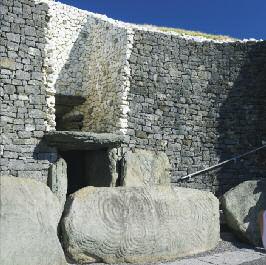 NEWGRANGE • IRELAND
NEWGRANGE • IRELAND
One kilometer north of the River Boyne, in County Meath, one of Ireland’s most sacred sites can be found. Newgrange, historians theorize, was built about 3200 BC, during the Neolithic period. It predates Stonehenge and the Egyptian pyramids. Visitors today view a large circular mound faced by a stone retaining wall. A stone passageway penetrates into the interior of the mound, with numerous chambers opening off the main passageway. Its exact origins are shrouded in mystery. There is no consensus about the type of rites enacted within and around the mound, although all agree that they were of religious significance. The mound is aligned with the rising sun and its light floods the interior chamber on the winter solstice.
For reasons unknown, the entry into the mound was closed and sealed for many centuries and was only re-discovered in the 17th century. Allusions to the mound are found in Irish mythology and ancient folk tales. Despite the obscurity that surrounds the origins of Newgrange, it bears a striking resemblance to Neolithic sites found in Scotland, Wales and other part of western Europe. In the 1970’s, controversial reconstruction was undertaken that redefined the entryway into the interior. The authenticity of that reconstruction remains, to this day, a source of endless debate among historians. Yet archaeologist Colin Renfrew writes that Newgrange “is long unhesitatingly regarded by the prehistorian as the great national monument of Ireland.”
ALLAHABAD, INDIA
Once every 12 years, Hindus from all over India congregate in Allahabad, at the confluence of the Ganges and Yamuna Rivers in the northern state of Uttar Pradesh. They come to celebrate the Kumbh Mela Festival, which coincides with the alignment of Jupiter and the Moon. Hindu scripture teaches that, at this time, anyone bathing in the river waters will receive a blessing that can be passed down from one generation to another. Kumbh Mela translates roughly as fair pitcher; it is said that Allahabad (which is also known as Prayag) is one of four places in the country where drops of nectar once fell from the pitcher carried by Hindu gods.
During the 55 days that the festival lasts, countless millions journey to and from Allahabad to partake in the festivities. And countless is exactly the right word here; no one has a clue even how to tally the mass of humanity involved. One thing can be said with absolute certainty, however: Kumbh Mela is the largest gathering of religious pilgrims on the face of the earth.
“We cut into the half-bird, dipped the meat and crispy skin into the sunset-color butter, and wondered why we weren’t doing this at home.”
by Andrea Clurfeld
Hamilton’s Grill Room
8 Coryell St., Lambertville • 609.397.4343
Hours: Open for lunch Thursday through Monday from 11:30 a.m. to 2:30 p.m.; reserva-tions not necessary. Open for dinner Monday through Thursday from 6 to 9 p.m., Friday and Saturday from 5 to 10 p.m., Sunday from 5 to 9 p.m.; reservations recommended. BYOB, though should you forget to bring along wine, it can be purchased at The Boat-house just across the courtyard in The Porkyard complex.
Prices: Appetizers: $9 to $17. Soups and salads: $3.50 to $14.50. Entrees: $22 to $39. Sides: $6.50. All major credit cards accepted.
It’s the late 1970s, and Jim Hamilton is zipping around an alleyway off Coryell Street in Lambertville. He’s in the process of converting a semi-crumbling former sausage factory back here into… well, I’ll recreate the gist of it much as he spoke:
“An antiques shop, galleries, maybe an art studio,” Hamilton says with a sweep of his arm. “A cluster of spaces.” He speaks of the need for creative souls to have room to work by the canal and the river (that’d be the Delaware), as well as a supportive community. “A restaurant, we’ll put the restaurant back here. There has to be a restaurant, a place for people to come together. Simple food, fresh food.”
At this point, Hamilton stops moving and looks at the novice reporter (me) whose scribbling cannot keep pace with his free-flowing storm of ideas. We’ll freeze this frame, a la Jimmy Stewart as George Bailey in It’s a Wonderful Life on the face of Jim Hamilton, award-winning Broadway set designer. His eyes bright and focused, his mouth offering a half-moon smile, his body now in a half-lean against some half-beam, he is convinced that Lambertville—his old hometown, the place he has come back to for its good bones and endless potential—is going to someday be one of the most  desirable destinations in all of New Jersey; visually arresting, creatively energetic, spiritually satisfying. He convinces 20-something me.
desirable destinations in all of New Jersey; visually arresting, creatively energetic, spiritually satisfying. He convinces 20-something me.
I move there.
Every time I return, I start at The Porkyard, the name Hamilton gave to the old sausage factory that did, indeed, become exactly what he dreamed, and then some. The Porkyard jump-started Lambertville’s renaissance as the city (it’s New Jersey’s smallest) with the most to look at per square inch. Around every corner is a design gem, be it a detail or a top-to-toe restoration.
Today, The Porkyard, a must-stop in the diverse, design-centric downtown commercial district, is flourishing. There are antiques, art and a tiny and inviting two-story Mecca for drinks called The Boathouse, all of which are anchored by Hamilton’s Grill Room, the restaurant Jim opened more than 20 years ago. With his daughter Melissa then at the open-kitchen grill, it set the pace for a new style of restaurant dining: food and setting that are all about elegant simplicity and casual sophistication.
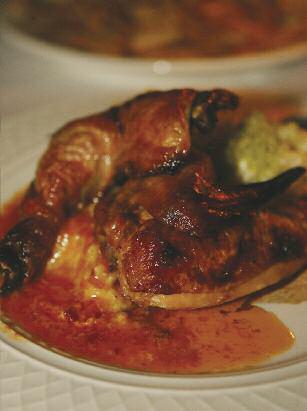 Chef Mark Miller fell into step with the distinctive Hamilton style several years ago when he took charge of the kitchen. The seamless transition means the romantic rusticity of the dining rooms can be appreciated without reservation. There’s the high-ceilinged, banqueted Gallery Room, along the canal; the twinkling-lights Garden Room; the private-for-a-party, mural-filled, post-and-beamed Delaware Room, warmed in winter by a Franklin fireplace; the airy and open Grill Room; and the intimate Bishops Room, with a framed mirror on the ceiling and angels painted on bead-board walls. In milder months, outdoor seating along the canal is the prime place to perch at Hamilton’s Grill Room, sipping wines you tote along and reveling in Jim Hamilton’s dreams come true…and food true to Hamilton’s roots as a home cook who believes in the integrity of basic Mediterranean food and using ingredients locally sourced.
Chef Mark Miller fell into step with the distinctive Hamilton style several years ago when he took charge of the kitchen. The seamless transition means the romantic rusticity of the dining rooms can be appreciated without reservation. There’s the high-ceilinged, banqueted Gallery Room, along the canal; the twinkling-lights Garden Room; the private-for-a-party, mural-filled, post-and-beamed Delaware Room, warmed in winter by a Franklin fireplace; the airy and open Grill Room; and the intimate Bishops Room, with a framed mirror on the ceiling and angels painted on bead-board walls. In milder months, outdoor seating along the canal is the prime place to perch at Hamilton’s Grill Room, sipping wines you tote along and reveling in Jim Hamilton’s dreams come true…and food true to Hamilton’s roots as a home cook who believes in the integrity of basic Mediterranean food and using ingredients locally sourced.
You’d be wise to start with an appetizer called “Jim’s Cannelloni,” for this thin sheet of pasta cosseting moist ground pork, a film of tomato and something that’s akin to a breeze of mild, melting cheese is all about casual done right in the kitchen. It’s the gentlest of segues from the slam-bam world of in-your-face flavors to what Hamilton’s cooking is about.
But don’t assume anyone here is afraid of feisty flavors. Take the grilled shrimp, super-sized and moist as served in their shells, which are plied with potent anchovy butter. Long a signature dish, they show how vigorous ingredients such as anchovies can work in accenting roles when properly applied. Speaking of proper, few can do a textbook-correct, pastry-crusted country pate, a sturdy, subtle mélange of meats plated generously with cornichons and spicy mustard. It’s a salute to the kitchen’s core sensibilities.
A toss of romaine hearts, slices of avocado and chunks of ruby grapefruit are a salute to off-season salads. An extra-cost add-on of jumbo-lump bluefin crab is a luxe touch.
To experience Hamilton’s at its best, snag entrees from the grill. A whole bronzino is a thing of beauty here—seared-skin fish you can fillet yourself, or have the kitchen whisk away the bones. If full-service is your wish, just ask to see the whole fish first so you can appreciate its beauty. On the night of our visit, the firm-fleshed fish was very Med in style, served with a compote of olive tapenade that provided just the right punch of salinity to the mild finfish.
Grilled cowboy steak, cooked a little past the requested medium-rare, also was given an equally appropriate schmear to add interest: Creamy blue cheese, piquant and portioned just right, is a classic for the best beef, for sure, but seems to strike some chefs as just not enough. Too bad.
It will be too bad for you if you miss the downright terrific rotisserie chicken here, especially if when you visit it’s given a wash of tomato butter. We cut into the half-bird, dipped the meat and crispy skin into the sunset-color butter, and wondered why we weren’t doing this at home. Again, another oh-so-right moment at Hamilton’s Grill Room.
Then, there are those details, which must be in the Hamilton genes. Each entrée came with roasted cauliflower dusted with sharp, nutty grated Parmigano-Reggiano. We could not get enough of the stuff. We also wished we’d double-ordered the separate sides, particularly the creamy, charred leeks braised with a marinara that resonated San Marzano tomatoes, and the just-for-fun skinny pommes frites.
I remember much about previous suppers here at Hamilton’s Grill Room (sturgeon, mighty sturgeon; my first encounter with the vivacious shrimp-in-anchovy butter; a primo pork chop, flush with warm chutney; a cassoulet, plumped with duck confit), but I don’t recall too many sweets that have left the kind of impression as the savory dishes. On this night we love the perfect-pitch pecan pie, for its crust is light and flaky and it’s happily not too sweet.
I’m having the sweetest memories as we amble out of Hamilton’s Grill Room, knowing the restaurant’s defining chef Melissa Hamilton (she worked as food editor at Saveur, Cook’s Illustrated and Martha Stewart Living magazines) is nearby in Lambertville, now shepherding Canal House Books with her equally talented and food savvy co-conspirator, the writer-photographer Christopher Hirsheimer. I’m remembering going to a minuscule East Village restaurant called Prune shortly after it opened a decade or so ago, loving its food and meeting its chef-owner, who turned out to be Gabrielle Hamilton, also Jim’s daughter. (Gabrielle has won a James Beard Best Chef Award and written the also-award-winning memoir Blood, Bones & Butter.)
Mostly I’m remembering trying to keep up with Jim Hamilton (who, now well into his 80s, still lives in this countrified city) as he told me on that day 35 years ago of all that Lambertville could be. He was right, he tends to be, and it’s fine with me to continue to gasp at the heels of a man who understands the art of living beautifully.
Editor’s Note: Andy Clurfeld is a former editor of Zagat New Jersey. The longtime food critic for the Asbury Park Press also has been published in Gourmet, Saveur and Town & Country, and on epicurious.com. Her post-Sandy stories for NBCNewYork.com rank among the finest media reporting on the superstorm’s aftermath and recovery.
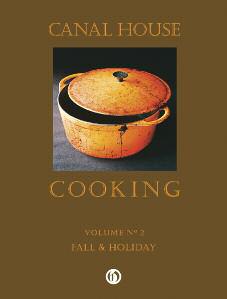 Cooking…By Design
Cooking…By Design
Canal House Cooking is the series of cookery books that brings home the “Essential Hamilton Eating and Cooking Experience.” They’re the brainchild of two like-minded women, Melissa Hamilton, former chef at Hamilton’s Grill Room, and her cooking partner Christopher Hirsheimer.
“Every day we cook,” they write. “‘Canal House Cooking’ is home cooking by home cooks for home cooks.”
The books, published periodically in decidedly un-coffee-table size, are available at Hamilton’s Grill Room. They’re designed by “a group of artists who collaborate on design projects.” The photography is ethereally elegant, yet the food in the photos looks down-home real.
Volume No. 6, for example, is subtitled “The Grocery Store,” and its recipes are inspired by grocery stores grand and esoteric, and also ubiquitous suburban supermarkets that can be at once meh and marvelous. Mostly, though, it’s about cooking from common ingredients, lots of pantry staples, with seasonal stuff as the kick-starter, and includes cocktail bites such as “Cheddar with Mango Chutney,” as well as “Any Night Linguine with Clam Sauce” and “Winter Summer Pudding.”
The cooks’ decision to rent a house for a spell in Tuscany and shop and cook there gave shape to Volume No. 7, “La Dolce Vita.” Living amid Italians, cooking like Italians prompted the women to divine “Meatballs with Mint & Parsley,” “Stuffed Onions Piedmontese” and “Christmas Soup,” with chicken and escarole.
Dinner, anyone?
Is wine storage in your home renovation budget?
By Hank Zona
Come on over for a glass of wine. It’s an invitation we hear more and more often in our vernacular. Small wonder—the United States is now the largest overall consumer of wine in the world, and here in New Jersey, wine drinking is well ahead of national trends. We rank comfortably in the top ten among states in total and per capita wine consumption and, not coincidentally, we are third in median household income. This is all more clearly reflected inside our homes, where the new “space race” is all about finding the safest, smartest, most convenient way to house our growing wine collections.

Photo Courtesy of Clawson Architects
Collectors have always sought to have showcase wine rooms and storage areas for bottles numbering in the hundreds, even thousands. They purchase fine glass-ware, often unique to different styles of wine, and the latest in gadgets and supplies, too. Most consumers, though, do not fall into the collector category. Yet many still desire some of the high-end trappings to better enjoy their own pursuits of the vine. It is this group’s purchasing interests that are greatly influencing the home remodeling market now.
Marvin and Rene Clawson, the husband-and-wife team behind Clawson Architects—a full-service architectural and interior design firm in Maplewood—confirm that accessibility to wine is a design request they hear a lot, as kitchens need to allow families to do more and more multi-tasking. “Ninety percent of all the kitchen designs we do now include a wine refrigerator in or adjacent to the kitchen,” says Rene Clawson.

Photo Courtesy of Susanne and Karl Rudiger
That refrigerator may be built somewhere into the kitchen design or as part of a separate beverage center, in the area that in the past was usually populated by a pantry. The cost of the unit itself—EuroCave makes several popular models—can run from the hundreds to the many thousands, not including carpentry, electrical, installation, etc. These modern conveniences are not just for new construction, but often they are retro-fitted and integrated into historic homes.
“We also help create efficiencies in larger homes for busy families”, adds Marvin Clawson. “In those homes, we are encouraging clients to include a beverage center on the second floor and, when the primary wine collection is a greater distance away, wine refrigerators in the master bedroom suite.”
Another trend in the home remodeling marketplace is transforming basement space into deluxe wine cellars. Not every homeowner, it seems, opts for a rec room or man cave. In most cases, a basement actually makes an ideal location for efficiently storing and enjoying a wine collection—subterranean basements work particularly well—and rates as a huge plus if and when the home goes on the market.
Depending on how homeowners plan to use the space (just storage…or perhaps something more ambitious, like a tasting area), a project like this can range from four figures to six figures. Work in a designer’s fee, as this is a renovation you definitely want to get right the first time.

Photo Courtesy of Clawson Architect
Enthused
Wine Enthusiast Companies, based across the river in Mt. Kisco, is the biggest wine storage and accessories company in the United States, shipping out over a half million products this past year. For over 30 years, they have been at the forefront of the market, selling everything from simple corkscrews to elaborate wine storage systems. Because of their Westchester location, the northern and central New Jersey markets are strong for them. Jacki Strum, the Director of Communications and Social Media at The Wine Enthusiast, says the company sells everything to do with wine but wine.
“We have a production development team that is focused on assessing the interests of our customers and then developing new products or identifying top-quality products made elsewhere,” she explains. Not surprisingly, they are a leader in wine storage sales. Demand for wine preservation (items and systems) and wine gadgets is on the rise, too.
Marshall Tilden III is a sales manager at The Wine Enthusiast who oversees a team of storage consultants that fields over one million calls and emails annually. “We ascertain our customers’ future wine purchasing goals, their storage needs and drinking habits and work within their budgets,” he explains. “Our customers often start off with us as apartment-dwellers and when they move to the suburbs, we help them to adjust their wine storage needs for bigger living space and bigger collections.”
What’s Cooking at Retail?
“In the cooking gadgetry world, wine is definitely a trend,” says Ben Salmon, proprietor of the South Orange kitchenware and home entertaining jewel box, Kitchen a la Mode. “We’re seeing tons of new gadgets to keep wine chilled after it leaves the fridge, both in the bottle and in the glass. Aeration is another wine gadget category that continues to be robust. Many more people are using gadgets to help their wines breathe as they’re being poured rather than using the traditional decanter method.”

Photo Courtesy of Susanne and Karl Rudiger
Elaborate wine openers are sometimes installed as part of a kitchen or wine room design, but as a rule consumers seem to be favoring simple openers that are made well with high-quality materials. As for glassware, customers are rethinking “a different glass for every wine” and picking one or two shapes that are versatile in highlighting a variety of wines. “People tend to be buying higher quantities of one or two types of glass than lower numbers of a variety of shapes,” Salmon reports. “I also see consumers moving away from the very inexpensive glasses that are not sturdy and have that horrible beaded rim, but also moving away from the very expensive glasses that can be too delicate for the price. I’m seeing sales surge in high-quality restaurant supply glasses—well-made glasses that drink nicely and don’t cost a fortune.”
Gifting of wine-themed items has seen significant growth according to both Tilden and Salmon, who also note the increasing popularity in the “upcycling” of old wine barrels and bottles for cheese boards, candleholders, tables, and wine storage. The boom in wine-themed products at trade shows is a good indication that more variety will be coming to market.
Editor’s Note: Hank Zona is a wine educator with a loyal following in New Jersey. You can read more of Hank’s work and peruse his event schedule at thegrapesunwrapped.com.
Some athletes seem destined for stardom before they reach their teens. Others blossom in adolescence or soon after. And then there are those fascinating few whom stardom kind of “creeps up on”—taking them, their fans, their friends and family, and even their sport, largely by surprise. David Clarkson is okay with being one of those athletes. The high-scoring star of the Devils was a major reason why they made it all the way to the Stanley Cup Finals last spring, yet it wasn’t too long ago that he was undrafted and ignored by all 30 professional hockey teams. That kind of career arc tends to ground a guy in reality. It also enables him to savor the sweetness of success. EDGE Editor Mark Stewart grabbed Clarkson after a recent practice at the Prudential Center and talked about the Toronto native’s design for living. Turns out it hasn’t changed much since he was scrapping for a spot on an NHL roster. Clarkson takes it one day at a time, finding subtle ways to improve, enjoying life’s little pleasures and appreciating every new day.

Photo credit: Bruce Lowe
EDGE: Consistency is such an important part of an athlete’s life. Not just on the ice after the puck drops, but before you even get to the rink. What are some of the things you do on game day that keep you in a consistent rhythm?
JC: I’d say that I’m pretty superstitious. For the past five years, I’ve stopped at Starbucks on the way to every single home game. It’s part of my routine. I get my sticks ready at a certain time, I get a massage at a certain time. There are a lot of little things I do to prepare. I think it helps me relax and keep my mind off of details that aren’t related to the game. It’s also that, as you said, athletes are very routine-oriented people. When things are going well, a lot of us tend to do things like eat the same meal the night before games. If it worked once, why change?In terms of routine, on game day we usually have a morning skate, then I’ll go back home to West Orange and see my two-year-old daughter McKinnley for a little bit, take a nap after lunch, and head out to the game.
EDGE: What’s the meal you ask for at home when you’re in a groove?
DC: My wife, Brittney is a great cook and baker. I’m very lucky in that department. She makes this chicken with capers in an amazing sauce. I love that.
EDGE: What about when the Devils are on the road? Do you look for the same things on the menu, or do you experiment with local specialties?
DC: I might try something different for an appetizer, but I like to stick to the same entrées before games. Steak, for sure. And sometimes I’ll see what kind of fish is on the menu.
EDGE: What do you watch on TV?
DC: I grew up a huge Seinfeld fan. That’s one of my favorites. Lately I’ve become a big fan of Dexter and Homeland. And How I Met Your Mother.
EDGE: What’s on your iPod?
DC: Every kind of music. My dad was born in Scotland and my mom is Irish, so I have a lot of Rod Stewart on there. But a very wide range of artists, I’d have to say. I love music.
EDGE: Was it weird not playing hockey this fall?
DC: It was. Still, you try to make a positive when something bad happens. So I used that time to train more and get stronger. And I ended up going over to Austria and playing for a little bit. But you know, after the run we had to the Stanley Cup Finals last spring, we were all pretty banged up and tired. I liked being able to relax and see my daughter grow up. We travel a lot as athletes, so that time I got to spend with my wife and daughter was special. By the end, though, I think Brittney was sick of me being at home. She was looking at the calendar wondering when I’d be getting back to work.
EDGE: A lot of our readers send their kids to hockey camp. What is David Clarkson’s great hockey camp story?
DC: I went to Brendan Shanahan’s hockey school as a kid. He was someone who played the game hard, and at the end of each camp they would hand out a stick for the player who’d worked the hardest. I got it one year—my dad still has that stick! But I was like any kid at a camp, dreaming about being here in an NHL locker room one day. I never thought I’d make it, of course, so it was pretty special just to be around those guys at that time in my life.

Photo credit: Bruce Lowe
EDGE: You’d been on the Devils roster a couple of seasons when Shanahan joined the club in 2009 at the age of 40. Did he remember you as a camper?
DC: No. I had to show him pictures of me at the camp—when I was really, really little. He told me if I ever showed anyone else those pictures I’d be in trouble!
EDGE: This is your second time playing for the Devils’ coach, Peter DeBoer. Besides the fact you’re both older and wiser, has anything changed in a decade?
DC: No, he’s always coached the same, structured hockey. If you stick to his system, to what he’s preaching, you’ll be successful. I won a Memorial Cup with him in 2003 in Juniors and last year we went to the finals. So I think what he does with a team shows in the results. Where he goes, success follows.
EDGE: You’re one of the few stars in the NHL that went overlooked in the draft. How did the Devils discover you?
DC: Pete had a lot to do with it. I was 20, 21 years old and no one had drafted me. I didn’t know what was going to happen next. I had been to a couple of tryouts that Pete had arranged, but no one was really sure if I was good enough or tough enough. I think that pushed me harder to prove myself. I played one more year for him, and then the Devils and a couple of other teams called, and the Devils saw something and signed me. It just goes to show, it pays to work hard and do the little things well.
EDGE: What changed in your game to make you a goal-scorer last year, and even more so this year? Is that work you do in-season or during the off-season?
DC: It’s a very wide range of things. As an athlete you can never be happy with where you are. You always try to get better. Having a coach who put me in situations where I had to produce helped me, too. Pete believed in me. But I think in the summer, you have to go home, figure out what you want to get better at, and really work on it.
EDGE: When you say “work on it” does that mean work on the ice, in the weight room? Does that work happen between the ears? Where does that kind of transformational work have to take place?
DC: A lot of it is in your head, yes. But I’ve also hired people to help me with my skating and my hands over the summer. There’s a lot of training and a lot of pushing. I believe the day you are happy with where you are, that’s the day it starts going in the other direction. That’s something I’ve learned from the guys I’ve been lucky enough to play with in this organization.
EDGE: Whenever you’re on the ice, there’s definitely a buzz in the Prudential Center—not just when you’ve got the puck, but when you deliver a check or just get in a guy’s grill. Do you feed off that energy or are you oblivious to it?
DC: Oh, I feed off it. We are very lucky as Devils to have the type of fans we do. I don’t think we could have done what we did last year otherwise. When they start cheering, we get a real charge out on the ice. You really do feel that electricity from the fans.
Your city has experienced remarkable growth since you came into office 20 years ago. Give me three reasons why.
Great geography…we are convenient to everything. Great diversity…more than 35 different languages are spoken here. And the Jersey Gardens Mall, which really led the way for Elizabeth to convert from a manufacturing economy to a service economy.
What’s the coolest thing about the city that almost no one knows about?
George Washington had lunch here on the way to his inauguration in New York. Also, America’s first ice cream soda was served on the corner of Fulton and 6th. Does anyone even drink ice cream soda anymore?
If you could bottle one thing about your city and sell it—not including ice cream soda—what would it be?
The strength of the people. They are focused, determined and always looking for opportunities to succeed.
What’s changed the most about politics during your two decades as mayor?
The general demeanor. People who disagree with your policies feel it’s now okay to paint you as a horrible human being because of them. Also, thanks to social media, people can say or do whatever they please, regardless of the truth, and it becomes part of the permanent record.
Speaking of social media, would you rather have a Facebook “like” or a Twitter follower?
Twitter follower. They seem more engaged.
What part of your job takes way more time than anyone can imagine?
Scheduling. I might have to be eight or ten different places on a Saturday.
What is the hardest thing to say NO to as mayor?
Saying no to promotions because of budget constraints. Sometimes the things you know will help your town are not possible because of decisions made at the state or national level.
Who were your heroes growing up in Elizabeth?
Teachers. They were encouraging, informative and fun to be around.
Yankees or Mets?
Dodgers, actually. My father was a Brooklyn fan, so we rooted for them after they moved to Los Angeles. Sandy Koufax made a big impression on me, even though I was a right-hander. He seemed like the quintessential baseball player.
What did you think you’d be doing when you grew up?
I had no idea. You don’t need to have a set plan. You just need a direction.
What first intrigued you about politics?
I had a brother born with Down Syndrome and severe disabilities that prevented him from living at home. A local Councilman, Maurice O’Keefe, picked up the phone and got my brother into a facility where he could be cared for properly. I was really moved by this. I saw firsthand how politics could help people. When Maurice lost his election in 1978, I got into politics and ended up taking his seat on the City Council four years later.
What is the origin of the name Bollwage?
German. My sister traced our family to Pine Street in the early 1800s. I bet we were leftover Hessians from the Revolutionary War!
What’s your favorite food?
In this town, with so many great restaurants, I’ll get in trouble no matter what I answer.
Okay, when your wife offers to make you something special for dinner, what do you ask for?
Reservations…Uh-oh, I’ll probably get in trouble for that answer, too.
Editor’s Note: Mayor Bollwage wasn’t kidding about Twitter. You can follow him @MayorBollwage. While you’re at it, follow EDGE, too
@EdgeMagNJ.




